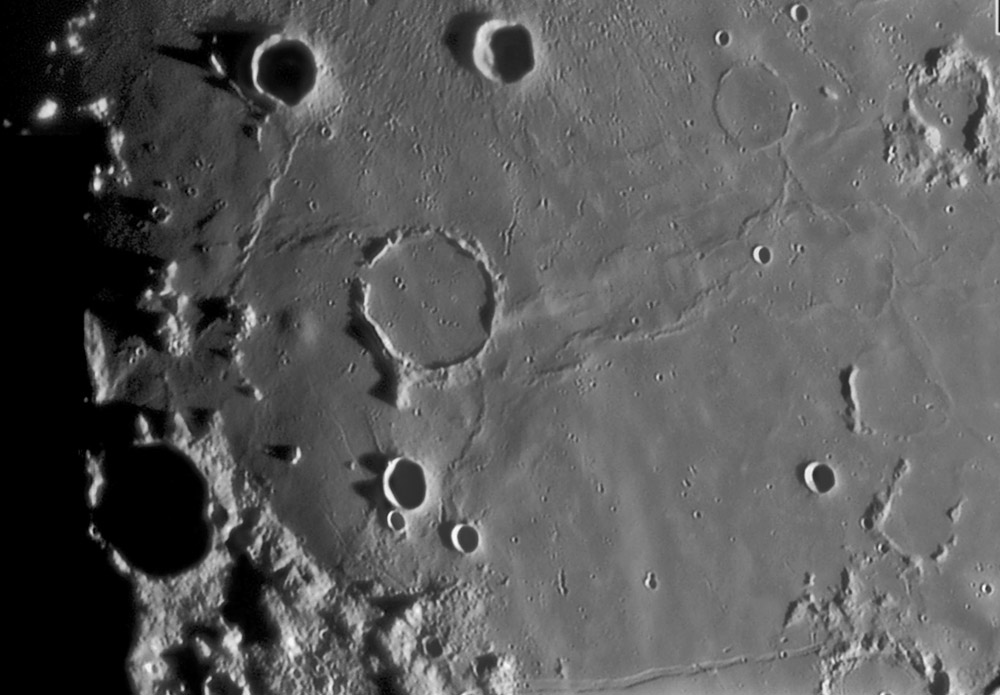
image by Paolo R. Lazzarotti, Massa, Italy
The edges of basins often have the most interesting volcanic features on the Moon. Deep faults from the basin formation provide easy paths for magma to rise to the surface. Most of the time it flows out as fluid lavas but sometimes different conditions lead to different results. The Kies dome, beautifully captured in this frame from Paolo, is one example of something unusual. With its central pit and hemispheric shape it is a classic shield volcano formed by lavas not quite as fluid as those that made lava flows. Its long lived vent allowed magma to flow in all directions, gradually building up a low slope cone. Just north and west of the dome are two small swells, that look like places where mare lavas were uplifted by magma that rose under them but didn’t erupt onto the surface. Near these two swells is a short length of a mare ridge, that looks twisted. Mare ridges are normally faulted areas where one piece of crust is shoved under the other, but this looks narrower and tighter - compare it with the others. Perhaps this ridge is volcanic, having extruded as a more viscous flow (or slower moving one) along a straight fissure. Pure speculation, of course. South of Kies is the twin-horned crater Kies A. Extending to the northwest is what looks likes a graben (a depressed area between two faults) but is really not. The upper side appears to be a very narrow ridge and the lower side is a rille. In fact, this rille continues all the way northwest to the Kies dome. And a second, much fainter rille parallels the rille immediately to the south. Rilles often form over rising vertical sheets of magma (dikes) and apparently this dike reached the surface and erupted the dome. Is this the only place on the Moon where evidence of a feeder dike exists for a dome? No.
Technical Details: 29 Dec 2006, 17:56-18:00 UT. Gladio 315 Lazzarotti telescope (f/25), Lumenera Infinity 2-1M camera, Edmund Optics R filter IR blocked, 155 frames stack out of 2000. I have enhanced the image to better show the faint rilles, Paolo’s larger original version is here. Also notice on the LPOD image the faint rilles south of Kies A and the slight swell they cut - they are yet another untold story.
Related Links:
Rükl plate 53
Paolo’s website
You can support LPOD when you buy ANY book from Amazon thru LPOD
COMMENTS?
Click on this icon File:PostIcon.jpg at the upper right to post a comment.



